
P6015 BNC repair
Peter, Tue Mar 21 2017, 06:33AMHi All, First post but long time reader.
I purchased a Tek P6015 HV probe that unfortunately had a damaged BNC connector. I lived with it for a while before finally replacing the connector with a “more common†male panel mounting BNC connector.
The new BNC has a 3/8†diameter thread with 32 threads per inch. I was able to tap the end of the original plated brass connector assembly (has several parts) and simply screw the new BNC into it.
Happy with the repair result and though my solution might be useful to others.
I have been using butane to pressurize the probe but lately I have started thinking about other gases. Looking at the manual it looks like the probe uses a 100Meg 4W resistor. With short duty cycle pulses the probe voltage rating doubles. Using helium or hydrogen as a pressurizing gas the 100Meg resistor cooling would be about 10 times greater. A French style bicycle valve is 6mm in diameter and that should fit next to the female BNC inside the probe body but with almost zero extra space.
Food for thought,
Peter

Re: P6015 BNC repair
Sulaiman, Tue Mar 21 2017, 08:13AM
I have not needed to refill my P6015 with butane for several years now,
I would be concerned about the leakage rate of your proposed gasses,
as butane has a large reserve in liquid form,
I have not yet felt the need to 'upgrade' my P6015 ... I prefer it to be working
Sulaiman, Tue Mar 21 2017, 08:13AM
I have not needed to refill my P6015 with butane for several years now,
I would be concerned about the leakage rate of your proposed gasses,
as butane has a large reserve in liquid form,
I have not yet felt the need to 'upgrade' my P6015 ... I prefer it to be working

Re: P6015 BNC repair
Peter, Tue Mar 21 2017, 10:05PM
Wants become needs
The butane phase change is a nice fix.
I have the same concerns about “improvements†and the risk vs. reward. Doubling the probe DC voltage rating would be useful for unstable load measurements.
The probe calibration after my repair was a bit fiddly but well worth the hour of effort. Yellow trace 1 is the 6015 output and the blue trace 2 is the input waveform to the 6015.
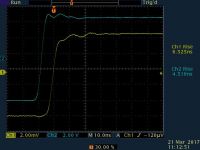
A bicycle valve is a small modification that could be reversed, however there is plenty of opportunity to screw up. Drilling and taping the probe or later testing the extended range. The standard valve makes it easy to measure the pressure when one feels the need.
The other approach is fabricating a voltage divider from HV resistors and capacitors. Not a trivial task with 75MHz of bandwidth but if you do have an accident you might not destroy your scope.
Peter, Tue Mar 21 2017, 10:05PM
Wants become needs

The butane phase change is a nice fix.
I have the same concerns about “improvements†and the risk vs. reward. Doubling the probe DC voltage rating would be useful for unstable load measurements.
The probe calibration after my repair was a bit fiddly but well worth the hour of effort. Yellow trace 1 is the 6015 output and the blue trace 2 is the input waveform to the 6015.

A bicycle valve is a small modification that could be reversed, however there is plenty of opportunity to screw up. Drilling and taping the probe or later testing the extended range. The standard valve makes it easy to measure the pressure when one feels the need.
The other approach is fabricating a voltage divider from HV resistors and capacitors. Not a trivial task with 75MHz of bandwidth but if you do have an accident you might not destroy your scope.
Re: P6015 BNC repair
Sulaiman, Wed Mar 22 2017, 10:05AM
two separate requirements, voltage and bandwidth
e.g. look at the voltage vs frequency limits for the P6015
unless you are cooking yourself with em radiation
(10's kV rms @ 75 MHz)
for this I would use a capacitive divider.
e.g. 1pF: 1nF
Sulaiman, Wed Mar 22 2017, 10:05AM
two separate requirements, voltage and bandwidth
e.g. look at the voltage vs frequency limits for the P6015
unless you are cooking yourself with em radiation
(10's kV rms @ 75 MHz)
for this I would use a capacitive divider.
e.g. 1pF: 1nF
Re: P6015 BNC repair
Peter, Sat Mar 25 2017, 06:30PM
I found a big old 1976 gov document on cooling with helium and air mixes.
This graph shows it all. With an 85% helium mix cooling is 4 times better than 100% nitrogen or air.
]helium_page_19_graph_3445605506342.pdf[/file]
Tubeless aluminum presta valves are manufactured by American Classic and probably many others. I like this outfit because they have an O ring seal against the bicycle rim.
Fill with a couple atmospheres of helium and then a squirt of liquid butane to regulate the probe pressure.
For the adventurous the 15% of other gas could be mostly SF6. Not certain if 15% SF6 would actually do anything positive.
For KISS advocates two stainless spheres (garden mirror stuff) a fixed distance apart makes a good HV DC blocking capacitor for measuring AC signals with the probe. One on the probe tip and the other on the HV signal wire. I did a quick low voltage calibration test and the waveform rise time is fine.
Peter
Peter, Sat Mar 25 2017, 06:30PM
I found a big old 1976 gov document on cooling with helium and air mixes.
This graph shows it all. With an 85% helium mix cooling is 4 times better than 100% nitrogen or air.
]helium_page_19_graph_3445605506342.pdf[/file]
Tubeless aluminum presta valves are manufactured by American Classic and probably many others. I like this outfit because they have an O ring seal against the bicycle rim.
Fill with a couple atmospheres of helium and then a squirt of liquid butane to regulate the probe pressure.
For the adventurous the 15% of other gas could be mostly SF6. Not certain if 15% SF6 would actually do anything positive.
For KISS advocates two stainless spheres (garden mirror stuff) a fixed distance apart makes a good HV DC blocking capacitor for measuring AC signals with the probe. One on the probe tip and the other on the HV signal wire. I did a quick low voltage calibration test and the waveform rise time is fine.
Peter
Re: P6015 BNC repair
Peter, Wed Mar 29 2017, 11:51PM
I found some information on dielectric strength.
Helium and hydrogen have a lower dielectric strength than nitrogen, darn.
Also somewhat concerning is the dielectric strength of butane.
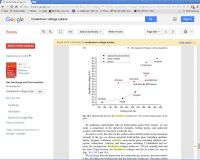
The 2nd document has one of these gases in the list.
]dielectric_strength_of_insulating_materials_- crc_handbook_of_chemistry__physics_.pdf[/file]
Putting it together it looks like butane has a dielectric strength about 10% better than nitrogen and it is used at a slightly higher pressure in the probe.
The bad news is the original probe gas R-114 is 3.2 times better than nitrogen.

My take is the probe voltage is substantially reduced when pressurizing with butane.
Peter, Wed Mar 29 2017, 11:51PM
I found some information on dielectric strength.
Helium and hydrogen have a lower dielectric strength than nitrogen, darn.
Also somewhat concerning is the dielectric strength of butane.

The 2nd document has one of these gases in the list.
]dielectric_strength_of_insulating_materials_- crc_handbook_of_chemistry__physics_.pdf[/file]
Putting it together it looks like butane has a dielectric strength about 10% better than nitrogen and it is used at a slightly higher pressure in the probe.
The bad news is the original probe gas R-114 is 3.2 times better than nitrogen.

My take is the probe voltage is substantially reduced when pressurizing with butane.
Re: P6015 BNC repair
Sulaiman, Thu Mar 30 2017, 05:59AM
From that graph,
Butane breakdown at c4.4 kV at p.d = 50 cm.mmHg
at 760 mmHg (atmospheric pressure) d = 50/760 cm = 0.658 mm
electric field gradient = 4.4 kv/0.658mm = 6.688 kV/mm
e.g. 10mm path length >= 66 kV breakdown.
Sulaiman, Thu Mar 30 2017, 05:59AM
From that graph,
Butane breakdown at c4.4 kV at p.d = 50 cm.mmHg
at 760 mmHg (atmospheric pressure) d = 50/760 cm = 0.658 mm
electric field gradient = 4.4 kv/0.658mm = 6.688 kV/mm
e.g. 10mm path length >= 66 kV breakdown.
Re: P6015 BNC repair
Peter, Fri Mar 31 2017, 04:41AM
My take on the information is not quite as optimistic.
Because the probe’s internal geometry is different than the electrodes used to create the graph you can’t use the numbers directly from the graph.
Comparing butane and R114 to nitrogen (or air) within the probe the operating voltage does not look as high as with R114.
Methane (3.0 on the graph) has the same breakdown voltage as nitrogen (on the list in the 2nd attachment). N-Butane (or Butane) is 4.4 on the graph or by the ratio 1.47 times higher breakdown voltage than nitrogen (incorrect number in my previous post). R114 is 3.2 times better than nitrogen and it is also better than Butane by 3.2/1.47 = 2.17 times.
Butane saturation pressure is 1.17 times higher than R114.
For Butane at its higher saturation pressure the R114 advantage over butane is reduced to 2.17/1.17 = 1.85. The reciprocal is 0.54 so let’s call Butane half of R114.
Crunch the numbers for yourself maybe I have missed something or you can find a better breakdown voltage table. I would suggest a reference to air is the most convincing comparison.
BTW I picked up that French bicycle valve and the size/fit is questionable. I think the valve needs some “adjusting on a lathe†and the supplied external nut has no clearance, so the nut needs two notches for the BNC and the plastic probe handle. Not worth the effort unless you intend to pressurize with SF6
Peter, Fri Mar 31 2017, 04:41AM
My take on the information is not quite as optimistic.
Because the probe’s internal geometry is different than the electrodes used to create the graph you can’t use the numbers directly from the graph.
Comparing butane and R114 to nitrogen (or air) within the probe the operating voltage does not look as high as with R114.
Methane (3.0 on the graph) has the same breakdown voltage as nitrogen (on the list in the 2nd attachment). N-Butane (or Butane) is 4.4 on the graph or by the ratio 1.47 times higher breakdown voltage than nitrogen (incorrect number in my previous post). R114 is 3.2 times better than nitrogen and it is also better than Butane by 3.2/1.47 = 2.17 times.
Butane saturation pressure is 1.17 times higher than R114.
For Butane at its higher saturation pressure the R114 advantage over butane is reduced to 2.17/1.17 = 1.85. The reciprocal is 0.54 so let’s call Butane half of R114.
Crunch the numbers for yourself maybe I have missed something or you can find a better breakdown voltage table. I would suggest a reference to air is the most convincing comparison.
BTW I picked up that French bicycle valve and the size/fit is questionable. I think the valve needs some “adjusting on a lathe†and the supplied external nut has no clearance, so the nut needs two notches for the BNC and the plastic probe handle. Not worth the effort unless you intend to pressurize with SF6

Re: P6015 BNC repair
Sulaiman, Fri Mar 31 2017, 07:40AM
I do not suggest that butane is the best choice, just a cheap easily available one.
(but potentially explosive)
With air as dielectric my P6015 arcs internally along the front clear plastic part,
with butane it does not ... with a c33 kV peak flyback, I've not tried higher.
If anyone finds a better, easily available dielectric, please tell me.
Sulaiman, Fri Mar 31 2017, 07:40AM
I do not suggest that butane is the best choice, just a cheap easily available one.
(but potentially explosive)
With air as dielectric my P6015 arcs internally along the front clear plastic part,
with butane it does not ... with a c33 kV peak flyback, I've not tried higher.
If anyone finds a better, easily available dielectric, please tell me.
Re: P6015 BNC repair
Conundrum, Fri Mar 31 2017, 08:16AM
Probably why He is used in hard drives.
Conundrum, Fri Mar 31 2017, 08:16AM
Probably why He is used in hard drives.
Re: P6015 BNC repair
woodchuck, Fri Mar 31 2017, 11:52PM
woodchuck, Fri Mar 31 2017, 11:52PM
Conundrum wrote ...
Probably why He is used in hard drives.
He is all about reducing aerodynamic drag...which reduces power consumption...which allows more storage in the same size case or, alternatively, a wider operating temperature.Probably why He is used in hard drives.
Re: P6015 BNC repair
Peter, Sat Apr 01 2017, 07:55PM
Butane is nice for many reasons and flashover inside the probe without oxygen is not a combustion hazard, however if you heat the probe the liquid butane will become a gas increasing the pressure and that could cause the probe body to rupture. So less liquid is better from a temperature-pressure prospective.
The attached patent page is all about cooling electronics. This page has a table of breakdown voltages for a few gases.
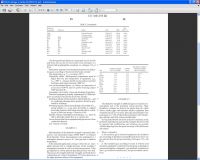
R152A (computer duster or canned air) is available in 12 oz cans for $3 in North America at 73.5psi it’s about 80% of the R114 breakdown voltage (used at the lower 32.1psi).
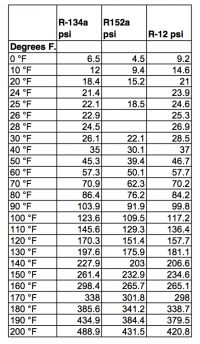
SF6 at 37.8psi would have the same breakdown voltage as R114 at 31.1psi. The probe manual has an upper operating room temperature of 55C which is 58psi from the table below. The manual also references a document and by exempting class 3 the upper operating temperature is 75C, I could not find the document so the exemption might be no people around, expect the probe to catastrophically fail, single use product.
I don't know the safety factor but it was designed in the 60s when engineers used slide rules and all calculations got rounded up. I would be shocked if it was less than 1.5, and 1.5 looks suspicious considering the 75C in the manual. But if you lower the upper operating temperature you get more pressure wiggle room.
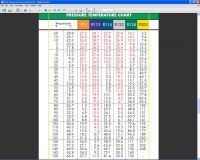
Not surprising that Tektronix picked the best gas for the job, however 50 years later nothing is better.
-Peter
Peter, Sat Apr 01 2017, 07:55PM
Butane is nice for many reasons and flashover inside the probe without oxygen is not a combustion hazard, however if you heat the probe the liquid butane will become a gas increasing the pressure and that could cause the probe body to rupture. So less liquid is better from a temperature-pressure prospective.
The attached patent page is all about cooling electronics. This page has a table of breakdown voltages for a few gases.

R152A (computer duster or canned air) is available in 12 oz cans for $3 in North America at 73.5psi it’s about 80% of the R114 breakdown voltage (used at the lower 32.1psi).

SF6 at 37.8psi would have the same breakdown voltage as R114 at 31.1psi. The probe manual has an upper operating room temperature of 55C which is 58psi from the table below. The manual also references a document and by exempting class 3 the upper operating temperature is 75C, I could not find the document so the exemption might be no people around, expect the probe to catastrophically fail, single use product.
I don't know the safety factor but it was designed in the 60s when engineers used slide rules and all calculations got rounded up. I would be shocked if it was less than 1.5, and 1.5 looks suspicious considering the 75C in the manual. But if you lower the upper operating temperature you get more pressure wiggle room.

Not surprising that Tektronix picked the best gas for the job, however 50 years later nothing is better.
-Peter
Re: P6015 BNC repair
Patrick, Sun Aug 19 2018, 07:50PM
i think your better off buying a 5kv probe then using a voltage divider as HV ruthenium resistors are better and cheaper then ever.
Patrick, Sun Aug 19 2018, 07:50PM
i think your better off buying a 5kv probe then using a voltage divider as HV ruthenium resistors are better and cheaper then ever.
Print this page